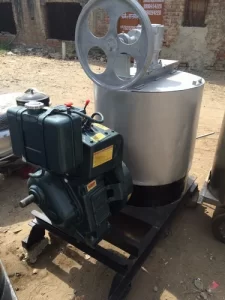About Road Marking Machines & Equipments
Road marking machines and equipment are vital tools designed for applying markings on road surfaces, including lines, symbols, and text. These markings are essential for guiding drivers and pedestrians, enhancing overall road safety.
There are several types of road marking machines, each suited for specific applications. Thermoplastic road marking machines utilize heated thermoplastic materials that are melted and applied to the road. This type of marking is known for its durability and weather resistance, making it ideal for high-traffic areas. The application process results in a robust and long-lasting finish, suitable for lane markings and safety symbols.
Airless spray road marking machines work by pressurizing paint and spraying it directly onto the road surface. This method allows for a smooth and even application, making it suitable for large areas and intricate designs. The versatility of airless machines means they can be used with various types of paint, providing flexibility for different marking needs.
Manual road marking machines are designed for smaller projects or detailed work. Operated by hand, these machines are portable and user-friendly, making them perfect for applications in parking lots, playgrounds, and other confined spaces. Their lightweight design allows for easy maneuverability, enabling precise markings without the need for extensive equipment.
Cold plastic marking machines utilize materials that do not require heating. These machines apply a quick-drying, highly reflective substance, making them particularly effective for permanent road markings and areas requiring high visibility, such as intersections and pedestrian crossings. The rapid curing time allows for immediate use after application, reducing downtime on busy roads.
Key components of these machines include a paint reservoir, which holds the marking material, and an applicator head that distributes the material evenly onto the road surface. In thermoplastic machines, a hopper is used to melt the thermoplastic before application. Mobility is ensured through wheels and chassis, designed for stability during operation, while guiding mechanisms help maintain straight lines and consistent widths throughout the marking process.
The applications for road marking machines are diverse. They are commonly used on highways and roads for lane markings, edge lines, and directional arrows. In urban areas, they facilitate crosswalks, stop lines, and parking space delineation. Airports also utilize these machines for runway markings and taxiway indicators, ensuring safe navigation for aircraft. Additionally, sports facilities benefit from road marking equipment to create clear field markings for various sports.
The advantages of using road marking machines are significant. They enhance safety by improving visibility and guiding traffic flow, which helps reduce accidents. High-quality materials used in modern machines ensure durability against the elements, contributing to the longevity of the markings. Furthermore, advancements in technology allow for faster application with greater precision, increasing efficiency in road maintenance and marking projects.
In conclusion, road marking machines and equipment play a crucial role in maintaining road safety and ensuring clear communication for all road users. Their continuous evolution reflects advancements in technology, offering better performance and efficiency in the vital task of road marking.

PRODUCTS

MULTI ANGLE RETROREFLECTOMETER SMCTSR – 1M

THERMOPLASTIC PAINT MACHINE SEMI AUTOMATIC




